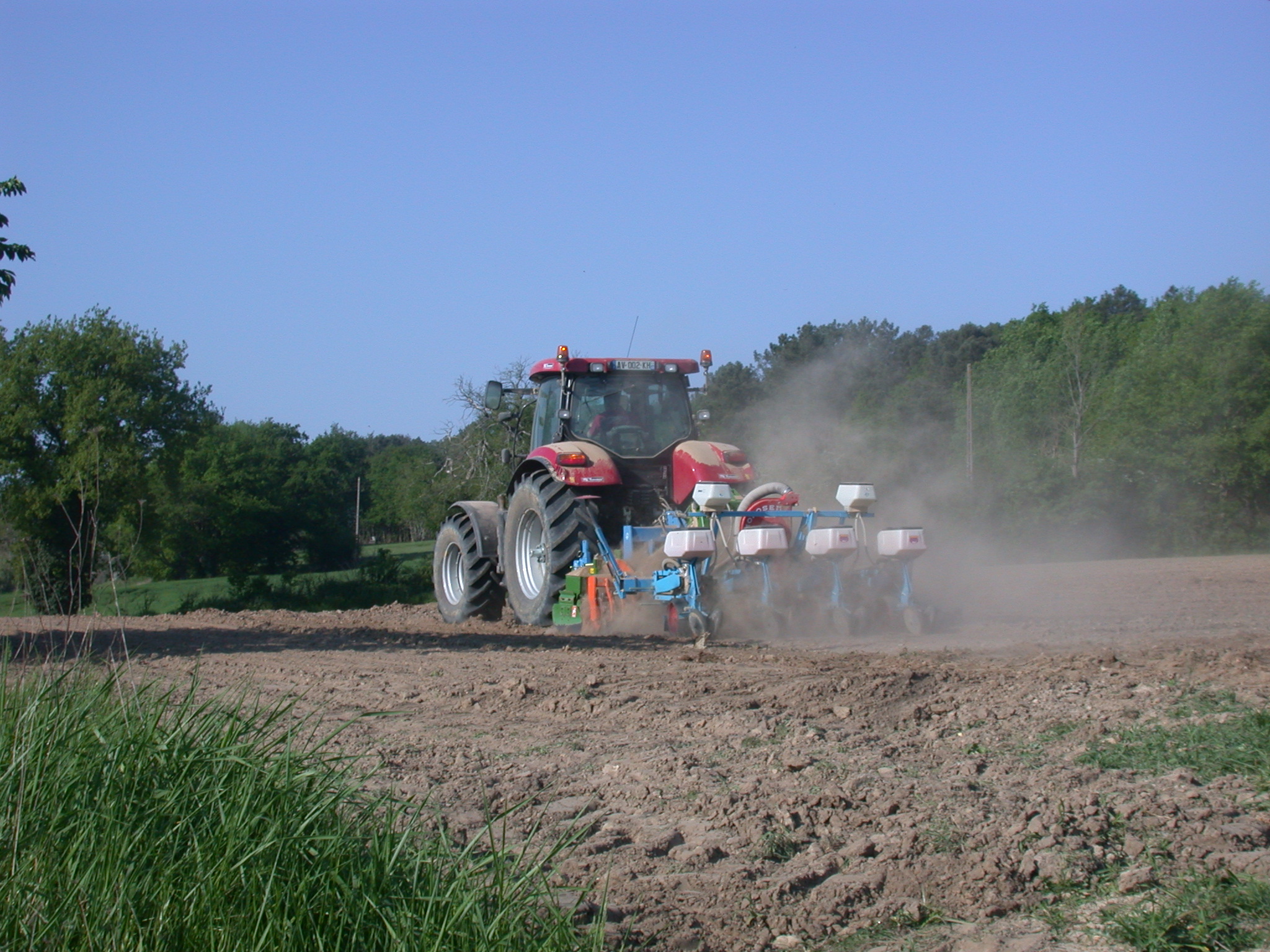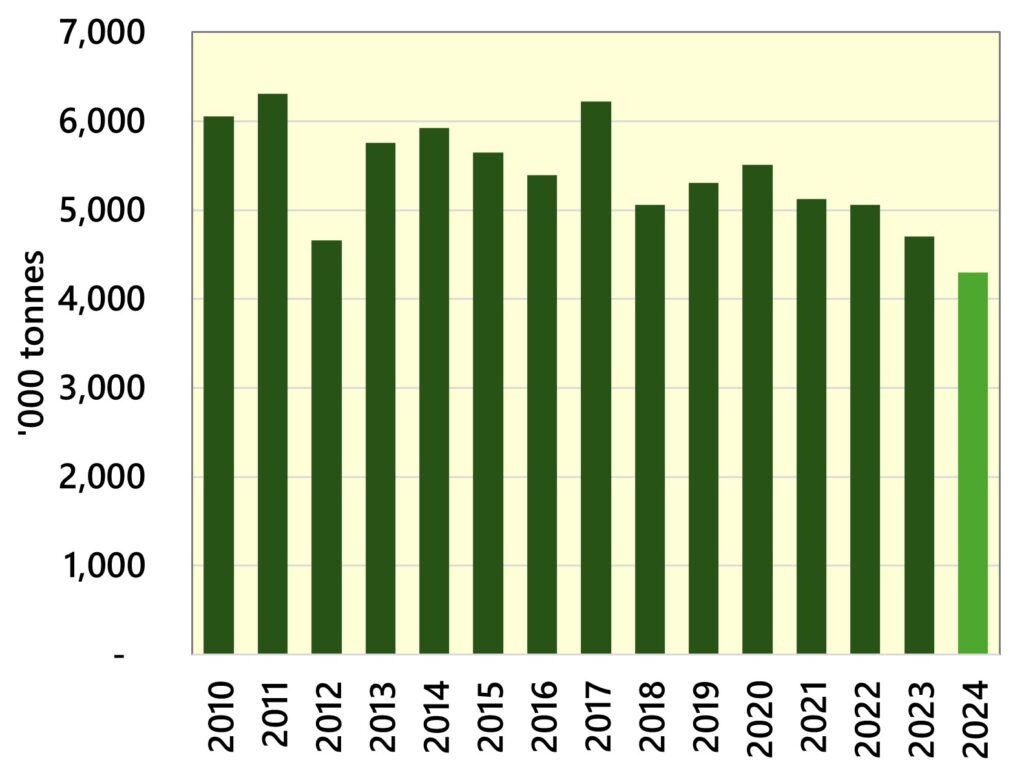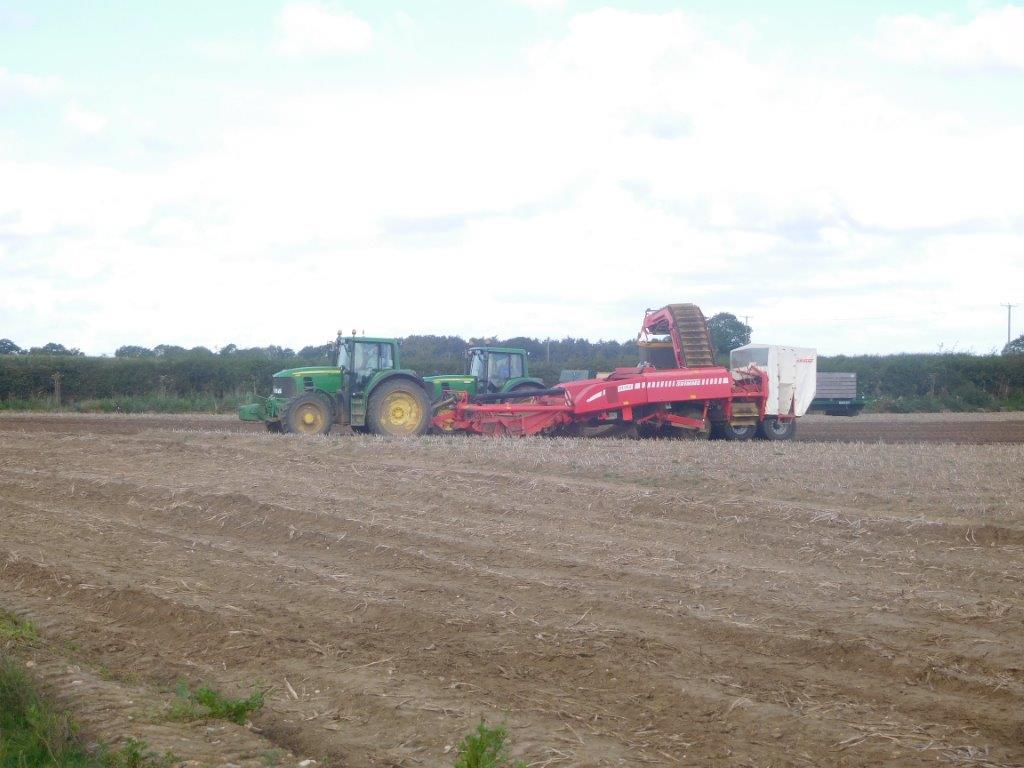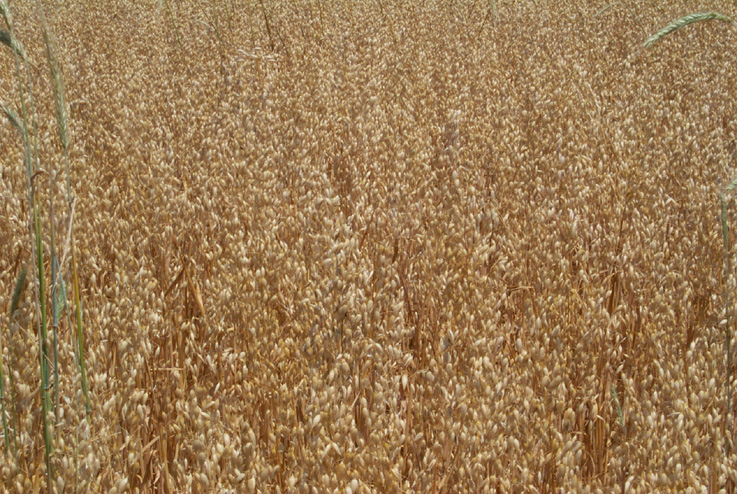Global Position
With results from the Northern Hemisphere harvest (which accounts for about 80% of the global grains harvest) now becoming available, forecasts of global grain supply and demand are being refined with some actuals. The latest figures from the International Grains Council (IGC) are presented in the table below for the new 2024/25 marketing year (2024 harvest), alongside the last month’s figures.
| World Grain Supply and Demand – source: IGC |
| Marketing Year –
UK harvest – |
21/22
2021 |
22/23
2022 |
23/24
2023 |
24/25 (2024)
Aug Sept |
| m tonnes |
WHEAT |
| Production |
780 |
804 |
795 |
799 |
798 |
| Usage |
784 |
794 |
807 |
803 |
803 |
| End Stocks |
274 |
284 |
272 |
266 |
267 |
| Stocks/Use Ratio |
34.9% |
35.8% |
33.7% |
33.1% |
33.3% |
| Stocks: Main Exporters |
62 |
70 |
63 |
59 |
61 |
| m tonnes |
MAIZE (CORN) |
| Production |
1,222 |
1,163 |
1,227 |
1,226 |
1,224 |
| Usage |
1,213 |
1184 |
1,223 |
1,229 |
1,230 |
| End Stocks |
298 |
277 |
281 |
277 |
276 |
| Stocks/Use Ratio |
24.6% |
23.4% |
23.0% |
22.5% |
22.4% |
| Stocks: Main Exporters |
56 |
47 |
54 |
58 |
57 |
| m tonnes |
SOYABEANS |
| Production |
357 |
376 |
393 |
419 |
419 |
| Usage |
360 |
369 |
385 |
406 |
406 |
| End Stocks |
54 |
61 |
69 |
82 |
82 |
| Stocks/Use Ratio |
15.0% |
16.5% |
17.9% |
20.2% |
20.2% |
| Stocks: Main Exporters |
18 |
16 |
19 |
29 |
28 |
| 22/23 figures estimates; 23/24 forecasts Argentina, Australia, Canada, EU, Kazakhstan, Russia, Ukraine, US Argentina, Brazil, Ukraine, US Argentina, Brazil, US |
It shows that the total wheat and maize production estimates are not changing vastly overall as the various nations’ harvest figures are counted up. However, within the figures, the European crop is declining and the US, Australian and South American crops are being revised upwards. This makes marginal overall change but advantages the European markets with additional surpluses further away from our markets; making them dearer to ship to here. Meanwhile, soybeans have not changed month on month.
Total global grain production estimates now sit at 2,315 million tonnes, or 2.3 billion tonnes. This is the largest crop the world has ever produced. We should not be surprised or impressed with records, as demand rises annually with more mouths to feed and ever-hungrier consumers. Despite harvesting more than ever before, stock levels are likely to decline this year as consumption rises have outstripped production increases. Yet, the ability of our industry to provide sufficient should year-on-year should offer food for thought for those expecting imminent mass starvation because of resource loss. It might happen, but it is clearly not inevitable.
Domestic Situation
The combinable harvest 2024 is now all-but complete in the UK – apart from some areas in the far north, and some later-harvested spring crops including beans and linseed. Harvest progress has slowed in the last week, with the heavy rain having hampered growers’ combining.
Overall yields for winter cereals and oilseeds are lower than average – but, it appears, by less than most people anticipated back in, say, March. Nature, once again has compensated remarkably well since the appalling winter weather; of course with the help of agronomists and farmers. Harvest performance, in terms of yield and quality variation is inevitable each year, but this year, the ranges in both are unsurprisingly greater than usual. Spring crops have faired better, with both yield and quality, especially in the North of England and Scotland. Some spring crops such as spring malting barley are likely to be the best performing combinable crops financially this year on many farms.
The unexpected and extreme weather conditions will have disadvantaged some farmers more than others, meaning those who usually excel may not stand out from the crowd this year, and indeed, bank managers and farm advisors might see cash issues with farms that are usually very safe, whilst others are relatively unaffected.
Over the last 31 days, the November 2024 (new-crop) wheat futures contract has fallen by £5 per tonne, and is now close to its contract low set in March. This is despite a rise since then of £47 per tonne, followed to a £45 fall. Previous Editions of this Bulletin have reminded the reader that prices of grains in the UK are not set by local supply and demand, having such a small proportion of the global production and trade. Having a small UK crop is not a very bullish factor on the scale of things. Whilst the 2024 crop price has swung so much since spring, the value of 2025 wheat has shifted far less, being £2 per tonne dearer when prices fell, the £12 per tonne cheaper when they rose. It is now back to carrying a £14.40 premium over 2024 crop prices.
Feed barley has outperformed feed wheat this month, with its discount now smaller than it was at the end of August. However, it is now dear on a global basis which suggests lack of exports might soon curtail additional price rises, especially as the UK does have an exportable surplus. Demand has picked up by compounders and pushed more value into barley than wheat. Malting barley premiums are slimming as it emerges the harvest, especially in Scotland is better than previously expected – being a smaller and more domestic market, the malting barley market is more localised than wheat.
Half of the combinable pulses are still in the field and may have been affected by the recent very heavy rains. Samples from other countries are showing insect damage, so potentially leaving opportunities for our pulses if they are clean and bright. It may be prudent to reflect on marketing them before the Australian harvest arrives in the New Year, which is likely to be clean.










